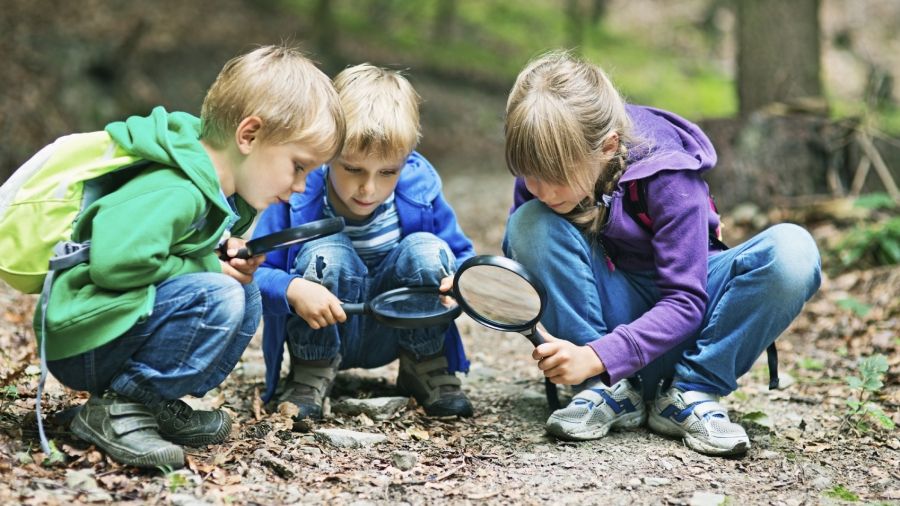
Experts in education, industry, and national security all agree that there is a national imperative to graduate students with a thorough understanding of science, technology, engineering, and mathematics (STEM.) In 2007, a Carnegie Foundation commission of distinguished researchers and public and private leaders concluded that the nation’s capacity to innovate and thrive in the modern workforce depends on a foundation of math and science learning. They conclude that a sustained, vibrant democracy is dependent upon this foundation in STEM.
But many parents and teachers wonder, at what age is it appropriate to start teaching STEM? And how can we implement these concepts into early childhood education? The answer is: It is never too early to start STEM education, and an ideal way to teach STEM is to go out into nature. Let me explain why.
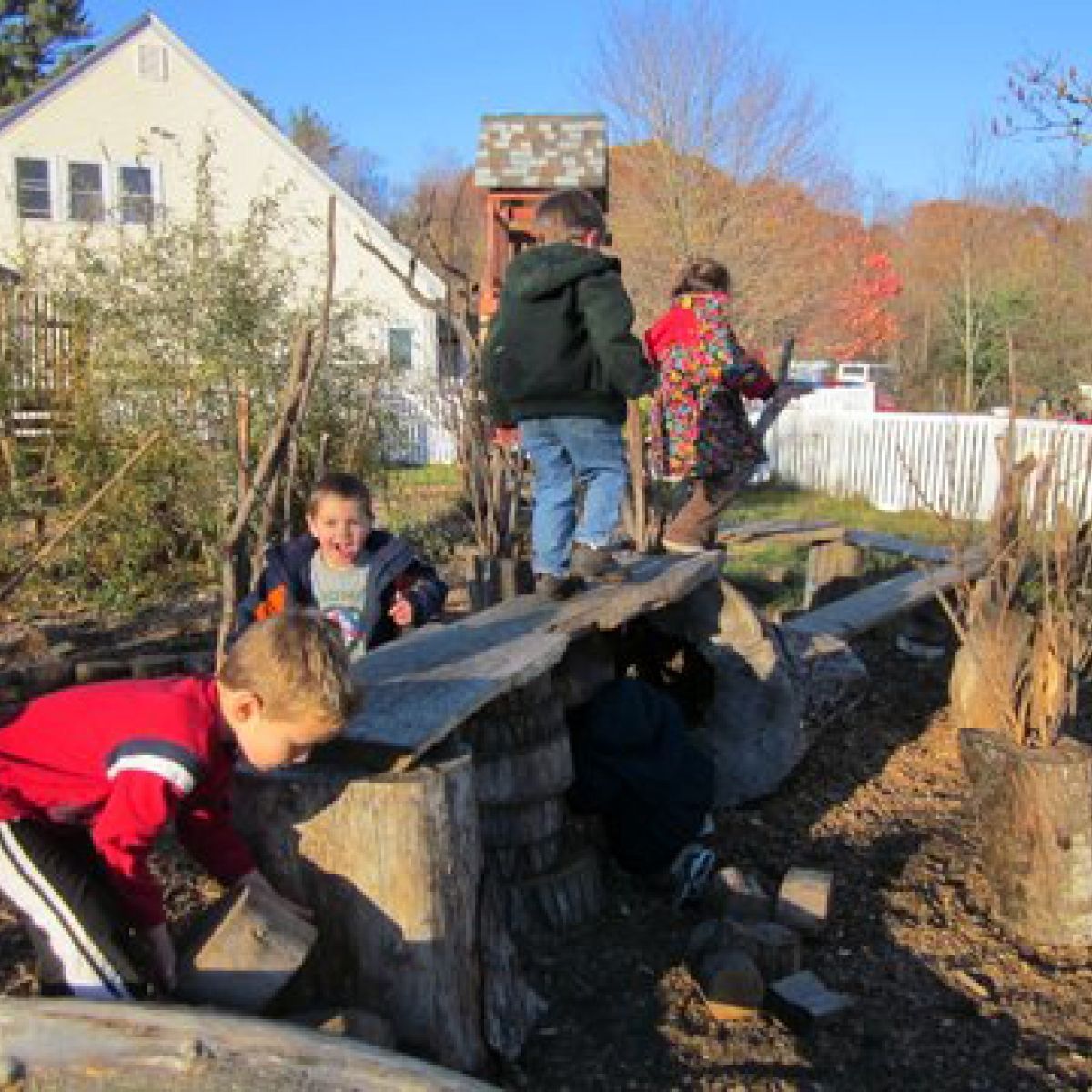
Live and Learn Early Learning Center
What is STEM?
First a little background on STEM. I like to think of STEM as much more than an acronym. STEM really is a philosophy. STEM is a way of thinking about how educators at all levels—including parents—should be helping students integrate knowledge across disciplines, encouraging them to think in a more connected and holistic way.
Our knowledge of how people learn has grown substantially over the last few decades. We now understand that success in learning requires the learner to be at the center of the experience, making connections across disciplines and also across contextual settings. Children need to be presented opportunities to learn the same material in different settings and through different lenses. The traditional approach of teaching topics in isolation does not support the ways that children learn best.
STEM, on the other hand, calls on parents and educators to give children chances to investigate an idea in a variety of settings, for what educators call cross-contextual learning. For example, in addition to math worksheets to help practice counting, we can take students outside to practice counting real objects that they find, such as rocks, acorns, or leaves. Their learning is strengthened when they learn the same skills, ideas, and concepts in different contexts.
We can also blend math and science to make learning interdisciplinary using a STEM approach. And the learning becomes more relevant when students go outside to explore nature. By asking the right questions, we can help stimulate investigations where students are identifying objects, making comparisons, making predictions, testing ideas, and sharing discoveries, all while observing their natural environment. Students can also explore sizes, shapes, patterns, and quantities in the process. In this way, children can learn concepts from different disciplines in different contexts, all in ways that are naturally engaging to them.
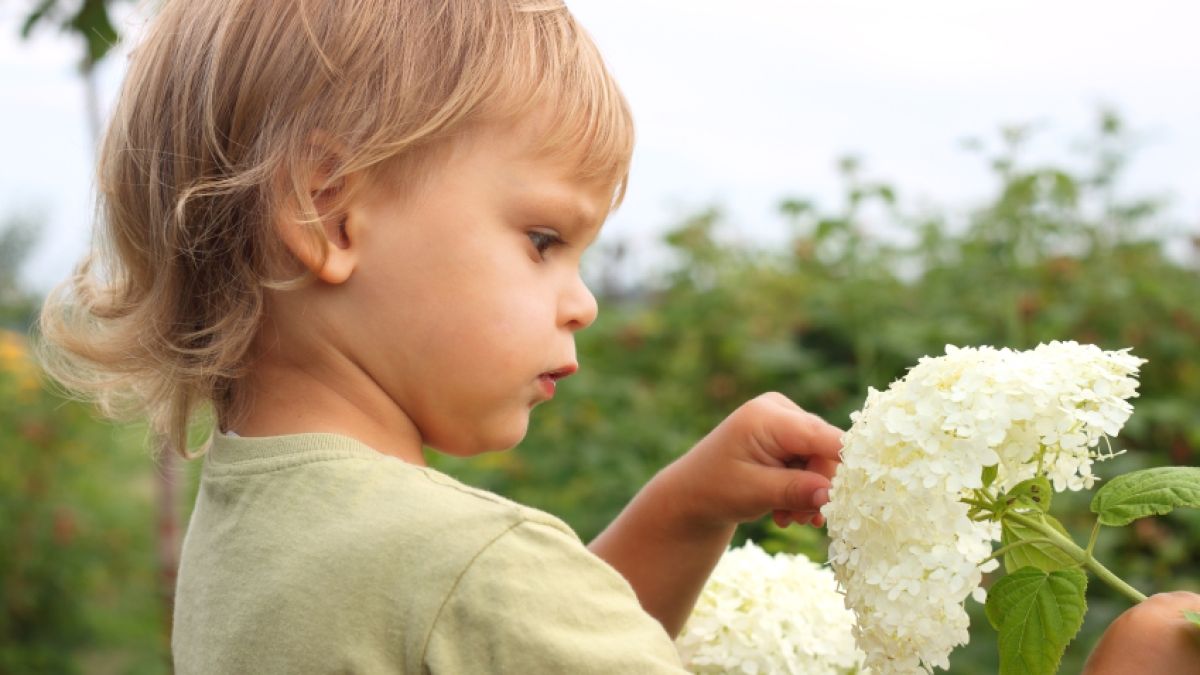
Building a Foundation
Let’s imagine that you’re going to build a tall, strong building. You’ve selected the perfect site, prepared the ground, and it’s time to start building. Where do you begin? You certainly don’t put the foundation on the 5th floor. So why should we wait until students are 5 years old and entering kindergarten to begin engaging in STEM activities? Students are incredibly active learners at 1, 2 and 3 years old, and we can start building their foundation in STEM as soon as they enter this world.
When my daughter Mya was only 3 months old, I began allowing her to touch leaves, watch spiders, enjoy sunsets, hold sticks, listen to waterfalls and go on nature walks. Were we doing STEM at 3 months old? Yes, I truly believe so. She was investigating the natural world around her, beginning to learn about how it works by testing it with her tiny fingers, watching it change, listening to its sounds, and feeling its textures.
The research is quite clear that the best practice in early childhood education is to break away from passive instruction and allow for more play and investigation, and this kind of learning early in life builds skills and interests that serve children throughout their school years, and later in life. Lilian G. Katz, in STEM in the Early Years, lays out a case that the best practice for early education is to allow students to be active, engaged, and take initiative in their own learning. Long-term research also indicates that being allowed opportunities to take initiative in your own learning is not only good for STEM learning, but for overall long-term academic success.
Unfortunately, in most academic instruction, children are in a passive or receptive mode instead of a more active, or even interactive, mode. Early childhood education should tap into children’s natural curiosity and give them ample opportunities to be active participants in their own learning. Natural settings offer children almost unlimited opportunities to explore and investigate, helping them build STEM skills that create a solid foundation for future learning.
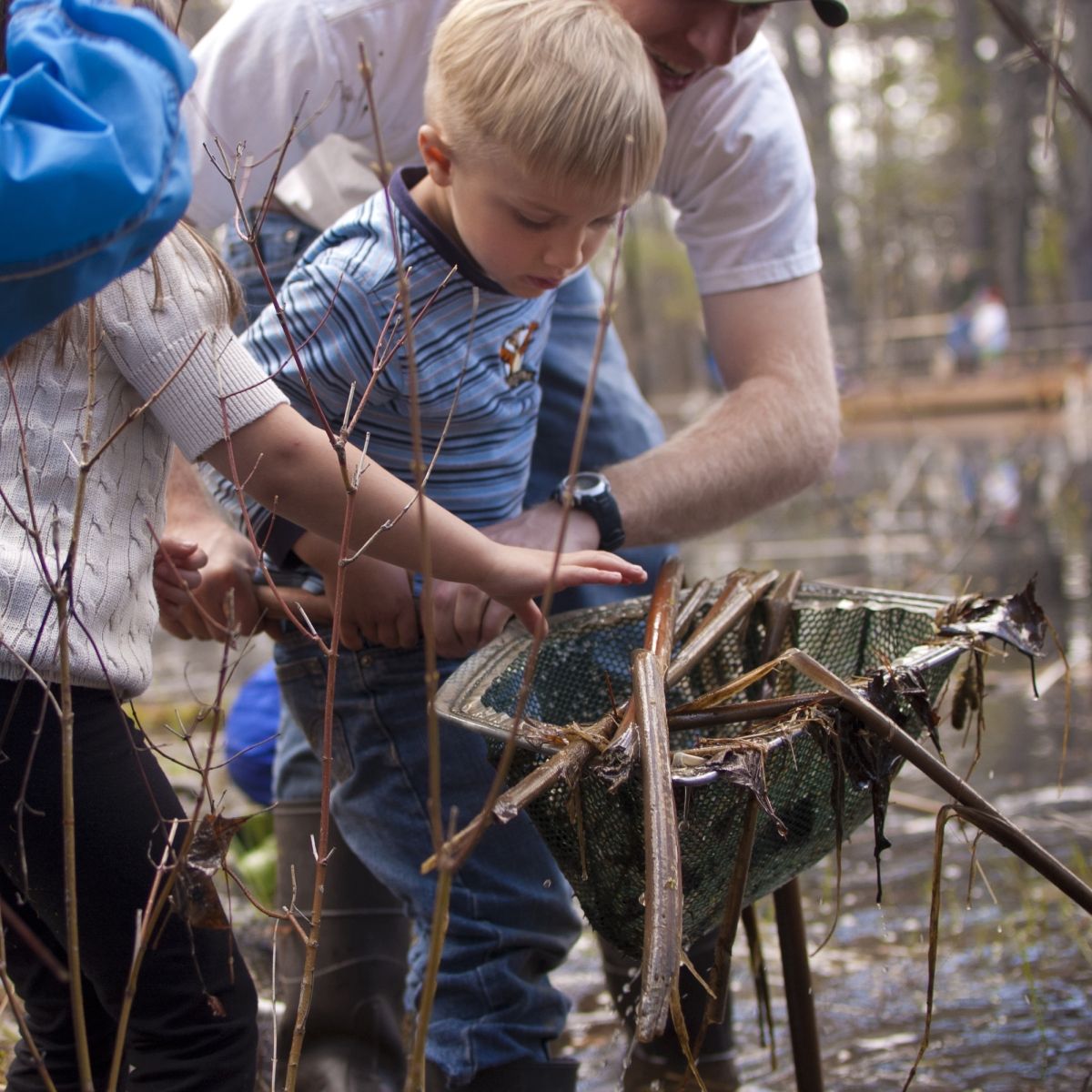
Chippewa Nature Center Preschool
Teaching STEM to Early Learners
The most important thing to remember about teaching STEM to early learners is that they are perfectly adapted to learn STEM concepts, and it is not difficult to teach STEM to young children. The secret is to tap into their natural and innate curiosity about the living world. By simply allowing them to investigate, by encouraging them to ask questions about the real world, you are engaging children in STEM.
How do I recommend you do this? While there are hundreds, if not thousands, of recommendations, none is more simple and more powerful than this: take children outside into nature. It is, I believe, abundantly apparent to almost any adult that once you let a child walk down a dirt path in a forest they start to explore their surroundings immediately. It is that sense of explorer that we need to tap into. Ask questions of your little researcher, encourage more exploration, and provide more opportunities to return to these types of settings. If you don’t have access to natural areas or even a more developed park, you can plant a small garden, make a terrarium, or simply make a start by growing seeds in cups.
The Boston Children’s Museum's STEM Sprouts Teaching Guide recommends the simple strategy of building students' confidence and making them feel like experts by asking “what” questions rather than “why” questions. “Why” questions imply that there is a correct answer. "Why do birds have feathers?," or "Why does the rock sink in the water?" are questions that have answers that children may not know, and may find discouraging. “What” questions, on the other hand, focus on what they are noticing and doing, and can be springboards for teachers and students to investigate together. "What are those ants doing?" and "What shapes do you see in those rocks?" are questions that invite children to observe, communicate, and be the "experts."
Now that my daughter is 4, she and I often go on “nature walks” where I encourage her natural curiosity for exploration. She loves the opportunity to collect almost anything: rocks, fossils, seeds, leaves, sticks, bugs, or whatever seems to be peaking her interest that day. As we collect, we practice counting, we create hypotheses about the things we see, and look at the different designs and shapes that we find in nature, as an initial inquiry into engineering design. We bring along binoculars, magnifying glass, and children’s field microscope to deepen our investigations.
To augment her curiosity even further, our home library is full of books about investigating nature, including her all-time favorite, Magic School Bus. We also watch documentaries on nature, and she can watch children's programming like Wild Kratts or SciGirls to reinforce her love of investigation with positive examples from media. In this way, we practice cross-contextual learning, where she is experiencing the ideas around STEM in different ways: She is getting hands-on investigatory experience and then also reading about others doing the same thing in her books or seeing ideas play out in TV programs.
Getting Outside from the Get-Go
A recent survey by Julia Torquati and colleagues found that early childhood educators are least confident about teaching nature/science. And a survey conducted by Julie Ernst found that 92% of Minnesota childcare teachers spend the majority of their outdoor playtime in maintained or developed play spaces, and no teachers reported using natural areas for the majority of their outdoor playtime. Early science teaching is not a priority in most preschool classrooms, and most teachers are not taking children out to play and explore in natural settings.
We need to work together to change the status quo for our nation’s children. If the leading thinkers on education believe that our hopes for a vibrant democracy hinge upon a foundation of STEM education, then we need to be encouraging best practices in STEM from the get-go. One of the best practices in teaching and learning is to make learning relevant, and there is nothing more relevant than being outside and exploring the world we live in. Let's not wait another day to take young children outside to start engaging them in STEM education.
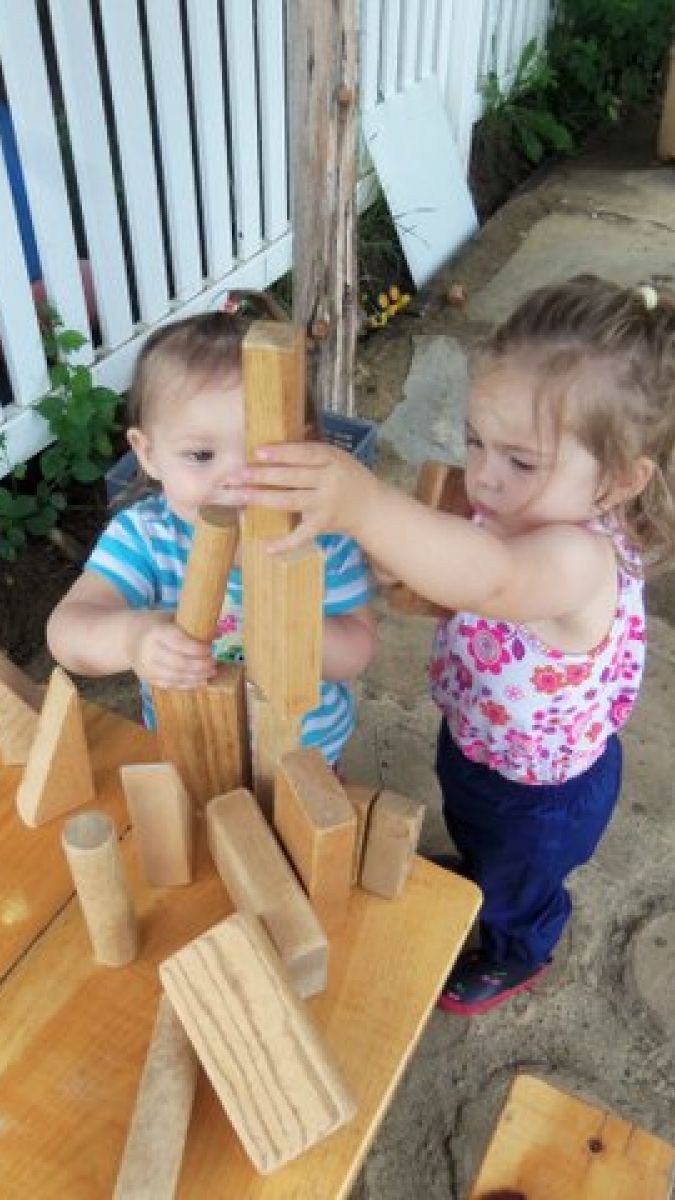
Live and Learn Early Learning Center
Additional resources:
SuccessfulSTEMeducation.org offers resources for people interested in learning more about STEM education.
NAAEE's Early Childhood Environmental Education Programs: Guidelines for Excellence describe good early childhood environmental education, which is also good early STEM education.
Be sure to check out the Children and Nature Network. Their site has a wealth of information on the back-to-nature movement.
The Boston Children’s Museum's excellent STEM Sprouts Teaching Guide assists preschool educators in focusing and refining the naturally inquisitive behaviors of three-to-five-year-olds in STEM.
About the Author
Joshua Sneideman is an Albert Einstein Distinguished Educator Fellow at the Department of Energy's Office of Energy Efficiency and Renewable Energy.